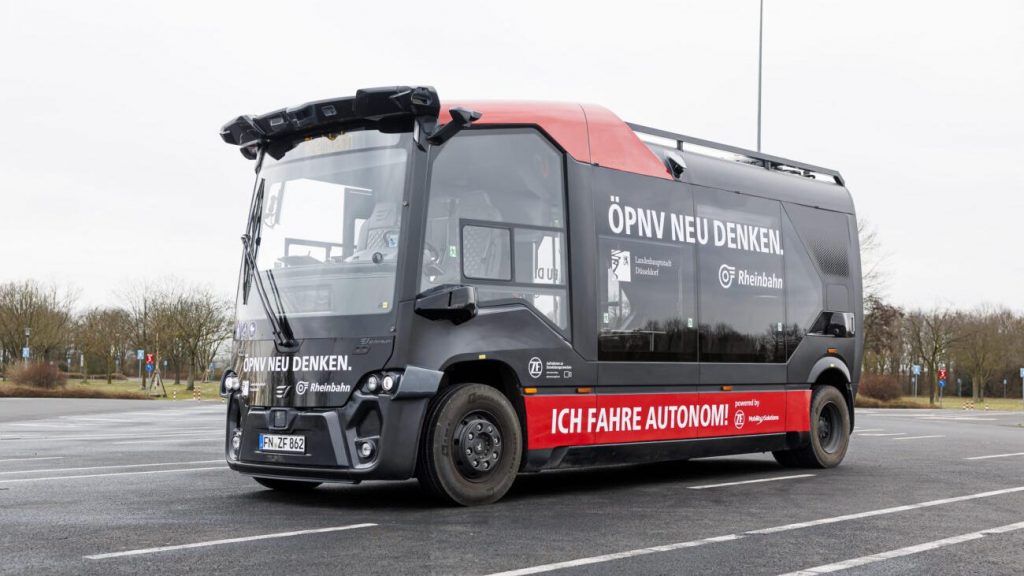With all the drones flying around at this year’s Xponential in Dusseldorf, one might have overlooked some of the other unmanned vehicles at the show. ZF Mobility Solutions is one company, sharing the stage with Rheinbahn AG, that wasn’t letting visitors forget about driverless road transport.

Annette von Rolbeck, ZF Mobility Solutions Head of Key Account Management and New Market Entry introduced the company: “We are an engineering and consultancy service in the field of autonomous public transport. We support technology developers with their cargo, shuttle, harbor applications, any field where you want to take a driver out of the use case, and we support public transport operators, cities and regulatory bodies, with how to deploy these systems, from initial purchasing through the whole value chain.”
ZF has developed a new autonomous shuttle with its project partner IVECO. The vehicle starts as a Level 0 (no autonomy), conventional design, then has a set of autonomous driving (AD) components added on. ZF has developed a comprehensive AD stack, comprising both hardware and software to enable Level 4 autonomous capabilities.
Hardware includes the ZF ProAI computer, full-range radar, speed and direction sensors, magnetic proximity sensors, and non-contact angle position sensors.”There are also sound sensors,” Rolbeck said, “so the shuttle is able to hear, for example, which direction a police siren is coming from.” Software includes a virtual driver stack, comprising a performance path, developed in collaboration with Oxa, formerly Oxbotica, and safety path.
Putting pieces together
“We’re sharing a space here with Rheinbahn, as a partner in the project,” Rolbeck said. “They are a huge public transport operator in Dusseldorf.” Rheinbahn ‘s is currently facing a shortage of bus drivers, and it is keen on integrating cutting-edge technologies into its operations, seeing the addition of autonomous vehicles as part of a broader strategy to improve mobility within the great city of Düsseldorf.
“Anyone who wants can try out the shuttle,” Rolbeck said. “It’s just outside and it’s taking guests around for a test ride. Otherwise, we are quite happy about the show. It has certainly been a success for Rheinbahn. They’ve had a lot of political stakeholders come by, as well as press, customers and even just regular people who read about Xponential and the shuttle in the newspaper. And we’ve seen other vehicles that are very interesting, like the MIRA autonomous shuttle.”
Next steps for the ZF-Rheinbahn shuttle include integrating the vehicle into the city environment. “We now have the regulatory framework here in Germany allowing us to test this kind of vehicle on public roads,” said Rolbeck, “although we are not yet able to deploy it in a commercial operation. Of course we keep in mind and work to help our customers understand the basic questions, like where is our business case, where can we make money.”

